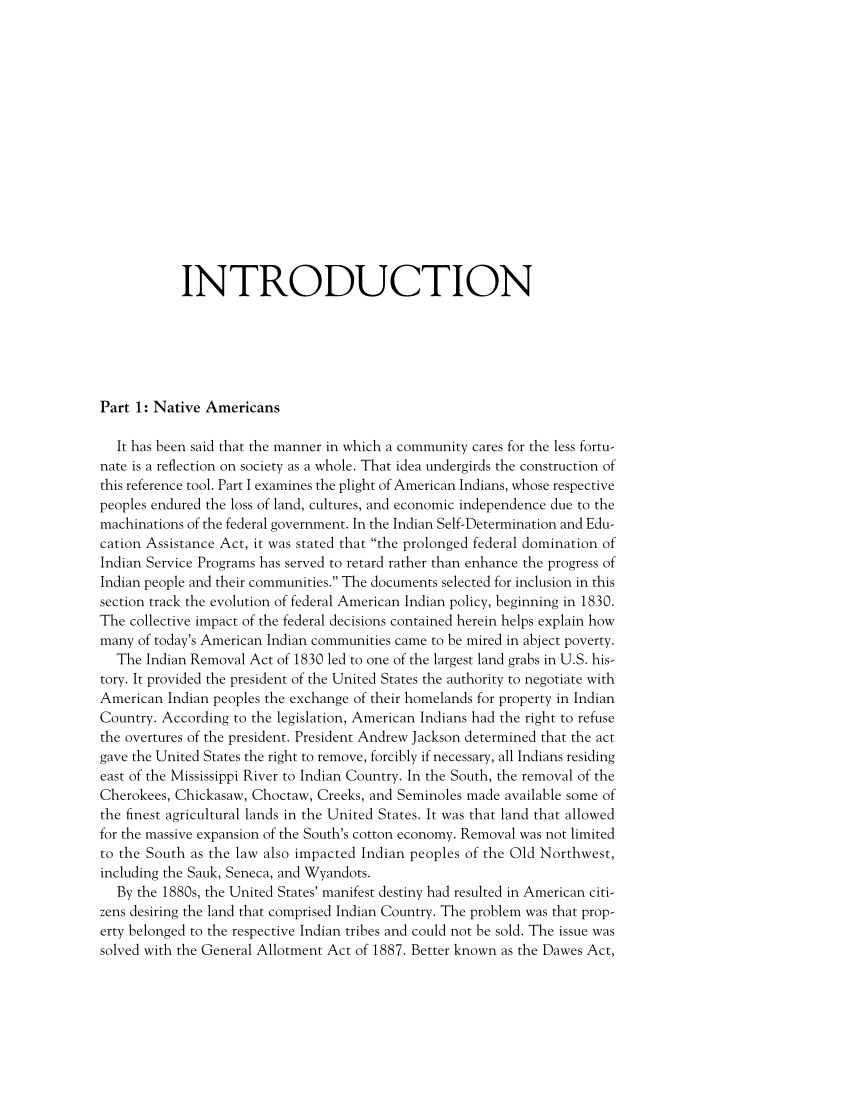INTRODUCTION Part 1: Native Americans It has been said that the manner in which a community cares for the less fortu- nate is a reflection on society as a whole. That idea undergirds the construction of this reference tool. Part I examines the plight of American Indians, whose respective peoples endured the loss of land, cultures, and economic independence due to the machinations of the federal government. In the Indian Self-Determination and Edu- cation Assistance Act, it was stated that “the prolonged federal domination of Indian Service Programs has served to retard rather than enhance the progress of Indian people and their communities.” The documents selected for inclusion in this section track the evolution of federal American Indian policy, beginning in 1830. The collective impact of the federal decisions contained herein helps explain how many of today’s American Indian communities came to be mired in abject poverty. The Indian Removal Act of 1830 led to one of the largest land grabs in U.S. his- tory. It provided the president of the United States the authority to negotiate with American Indian peoples the exchange of their homelands for property in Indian Country. According to the legislation, American Indians had the right to refuse the overtures of the president. President Andrew Jackson determined that the act gave the United States the right to remove, forcibly if necessary, all Indians residing east of the Mississippi River to Indian Country. In the South, the removal of the Cherokees, Chickasaw, Choctaw, Creeks, and Seminoles made available some of the finest agricultural lands in the United States. It was that land that allowed for the massive expansion of the South’s cotton economy. Removal was not limited to the South as the law also impacted Indian peoples of the Old Northwest, including the Sauk, Seneca, and Wyandots. By the 1880s, the United States’ manifest destiny had resulted in American citi- zens desiring the land that comprised Indian Country. The problem was that prop- erty belonged to the respective Indian tribes and could not be sold. The issue was solved with the General Allotment Act of 1887. Better known as the Dawes Act,
Document Details My Account Print multiple pages
Print
You have printed 0 times in the last 24 hours.
Your print count will reset on at .
You may print 0 more time(s) before then.
You may print a maximum of 0 pages at a time.

































































































































































































































































































































































































































































